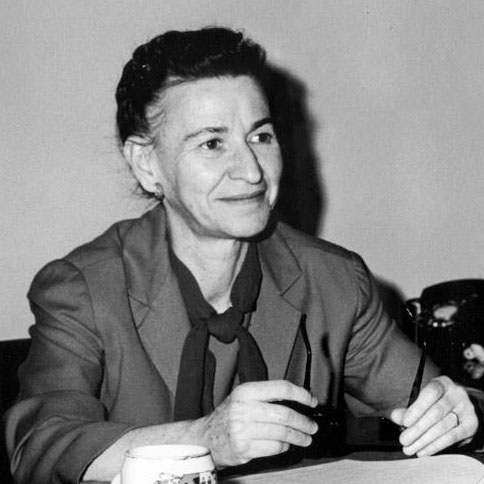Dorothy Toplitzky Blum
1924-1980

Dorothy Toplitzky Blum, known to all as Dottie, was a computer pioneer, cryptanalyst, and one of the most significant computer scientists in the country during the early days of computing. She was also one of the most outstanding women in government at the time. As an Armed Forces Security Agency and National Security Agency (NSA) employee, Bum worked on the Army’s Bombe used for breaking codes during World War II and helped develop Harvest/Stretch – IBM’s most sophisticated system of that era. She worked on early versions of FORTRAN, a scientific computer language especially helpful to NSA.
She was one of the first to apply computer processing to solve difficult cryptologic problems. For 30 years, she was an extraordinary manager and master planner for computing and telecommunications at NSA. Just as important to her legacy was her support and mentorship for so many women computer scientists, now recognized as “Queens of Code.” Blum served as a board member of Women in NSA (WIN), the agency’s women’s empowerment group. She was a senior advisor and provided career guidance that helped create career opportunities for many women.
Blum was born in New York City in 1924 to Joseph and Rebecca Toplitzky, who were Austrian immigrants. At 16, she enrolled as a chemistry major at Brooklyn College. However, it was a course in cryptanalysis that changed her life and led her to accept a job with the war effort in Washington, D.C. As a member of the Signal Intelligence Service, she worked on cryptanalysis of enemy messages, codes, and ciphers for the Army and control of the Army cipher and other computer machines.
She earned the respect of her mostly male co-workers and often represented the group at training and meetings like the Association for Computing Machinery, which was established in 1947. By the 1950s, Blum was actively involved with the new first-generation computers and technology. Both Blum and Grace Hopper are listed on the 1948 roster of the fledgling group.
In the 1960s, she worked as a computer scientist and manager designing critical computer systems and automated processes – both business and operational. In 1972, she was appointed Chief of the NSA Computer Operations Organization (C7), the only woman manager at the time and one of the highest-ranking women in the entire agency.
In the mid-1970s, she was appointed chief of the planning organization, taking on the massive job of evaluating, forecasting, and supporting computer and telecommunications requirements for NSA organizations worldwide. Her insights and knowledge of technology, end-users, and the mission, developed the roadmap for NSA’s IT success for the next decade. In 1977, she became the chief of the Plans and Project Development Organization in the Telecommunications and Computer Services Organization (T4), a position she held until she died in 1980.
To honor her memory, WIN created the Dorothy T. Blum Award, presented annually for more than 30 years to recognize NSA employees for excellence in employee personal and professional development.
In 2004, Dottie Blum was inducted into the NSA’s Hall of Honor. In 2017, the agency named the Dorothy Blum High Performance Computing Center in her honor.
Blum was married to NSA mathematician Joseph “Joe” Blum and had one son, David Elliot Blum. She died from cancer in October 1980 at age 56.
NSA is one of the most exciting places to work if you’re in the Computer Science area. This is because of the wealth of applications that we have and the different fields to which computers have been applied. If you look around, there is not any discipline at NSA, including the areas of Management and Administration, to which computers have not been applied in some form. – Dorothy Toplitzky Blum
Biography courtesy of the Maryland Commission for Women, 2022; updated 2023.
